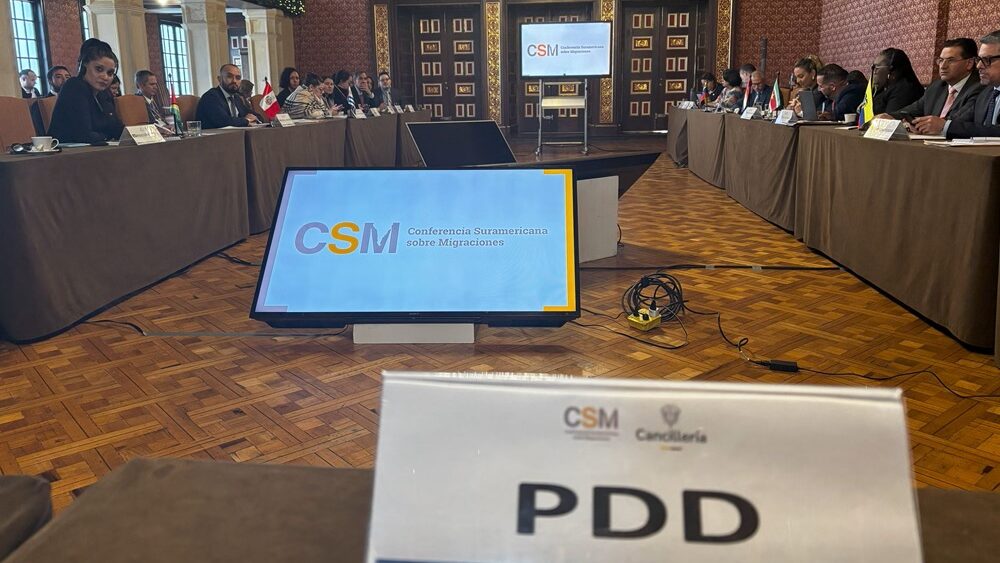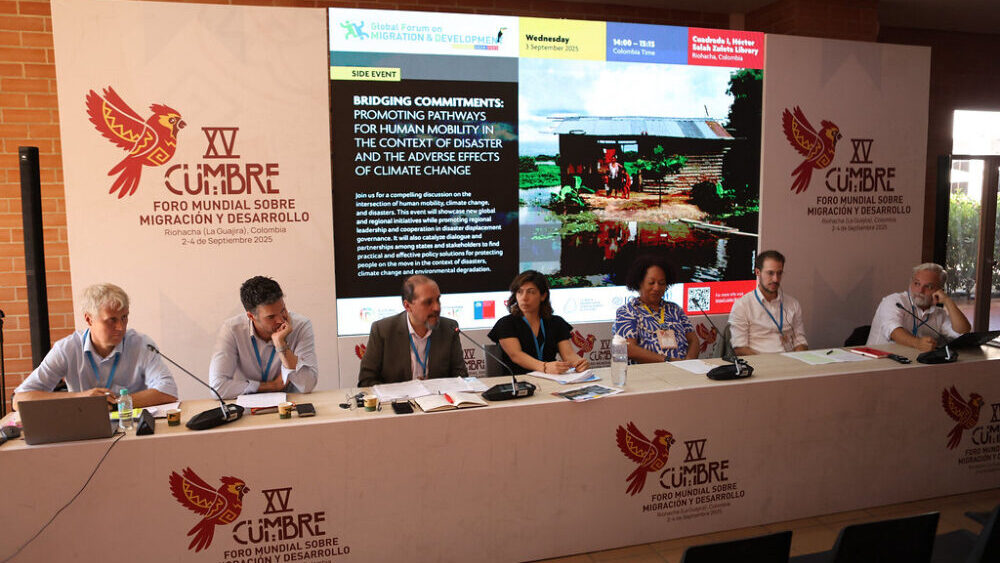South American Conference on Migration in Bogotá: Key Takeaways

4-5 December 2024, Bogotá, Colombia: The XXII South American Conference on Migration (CSM) took place in Bogotá marking a significant milestone in the region’s ongoing efforts to address migration challenges and promote regional integration. One of the most notable outcomes of this conference was the adoption of the South American Migration Plan for Integration 2035 (‘Plan Suramericano de Migraciones hacia la Integración 2035’). This comprehensive strategic framework aims to coordinate public policies, share best practices, and strengthen migration governance among South American countries, ultimately contributing to the broader process of regional integration.
The South American Migration Plan 2035
The South American Migration Plan for Integration 2035 serves as a strategic tool for the decade ahead, guiding the region’s migration policies and cooperation efforts from 2025 to 2035. It builds on the consensus reached by the countries involved in the CSM, which has become the leading regional forum for dialogue and cooperation on migration. The Plan is designed to ensure that migration management is better coordinated, more sustainable, and grounded in a human rights-based approach.
The adoption of the Plan reflects a shared commitment to addressing the multifaceted issues related to migration, which include economic, social, and environmental factors. The Plan’s objectives align with the region’s broader goals of improving human mobility, enhancing the protection of migrants, and fostering greater regional solidarity.
Focus on Disasters, Climate Challenges, and Environmental Degradation
A key element of the South American Migration Plan is the update of five thematic networks, each focused on a specific aspect of migration governance. One of the most pressing and innovative networks is the one dedicated to Disasters, Climate Challenges, and Environmental Degradation. This network addresses the increasing number of people displaced by disasters, the impact of climate change, and environmental degradation—issues that are becoming more prominent in the region due to frequent extreme weather events and environmental shifts.

The network’s main objective is to protect people displaced across borders in the context of disasters and environmental challenges, while emphasizing human rights protection. One of the 10 key objectives of the South American Migration Plan 2035 is to promote the protection of displaced persons in situations of disasters and emergencies of natural origin, through the establishment of minimum standards and the protection of migrants’ rights.
Three key priorities within the disasters and climate change focus of the Plan are:
- Protection measures for people displaced from countries affected by disasters,
- Inclusion of migrants in disaster response and preparedness plans,
- Collecting data and evidence on human mobility related to disasters, climate change, and environmental degradation.
These efforts aim to ensure that migrants, including those displaced by environmental factors, are not left vulnerable in times of crisis and that countries collaborate to create inclusive, rights-based responses to disasters.
The Role of the PDD in Supporting the CSM
During the XXII CSM, the Platform on Disaster Displacement (PDD) was invited to participate in a panel moderated by Chile, where discussions focused on current challenges in financing, managing international cooperation, and the work of the PDD in supporting countries in the region as a best practice. The PDD’s role in enhancing regional cooperation and facilitating sustainable disaster response practices was highlighted during this session.
The PDD’s contribution to the elaboration of the South American Migration Plan 2035 was significant. As part of its long-standing support to the CSM, the PDD has been actively involved in shaping and adopting regional guidelines since 2017 including providing technical expertise, facilitating dialogue, and ensuring that disaster-related displacement is addressed through a coordinated, rights-based approach.
Furthermore, the PDD reaffirmed its commitment to supporting the implementation of annual plans for the South American Migration Plan over the coming years. This includes the work of the network on disasters, climate change, and environmental degradation.
A Strong Commitment to Regional Integration
The adoption of the South American Migration Plan 2035 is a major step forward for the region. It strengthens the shared vision of a united, cohesive, and human-rights-centered approach to migration. The plan’s alignment with regional and global frameworks, such as the Global Compact for Migration, underscores the importance of collaboration in managing migration challenges and seizing the opportunities migration presents.
Through this process, South American countries are not only reaffirming their commitment to regional integration, but they are also setting a global example of how to create inclusive, rights-based, and sustainable migration policies in the context of a rapidly changing world.
The XXII CSM in Bogotá was a pivotal moment in advancing South American migration policies, ensuring that the region is prepared to meet the migration challenges of the next decade. The PDD’s continued support remains critical to the success of the South American Migration Plan for Integration 2035, and its ongoing collaboration with the CSM will help ensure that the Plan’s objectives are achieved in a timely and effective manner.
Cover photo: Colombia, Getty







